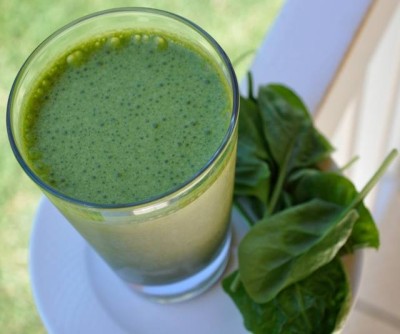“In Defense of Food,” Advice for Health
Michael Pollan, author of In Defense of Food, offers advice on how to eat to achieve maximum health.

“Where does your food really come from, and what should you have for dinner? Chances are that your food traveled hundreds of miles before it landed on your plate. But some experts say eating local might make us healthier, and better stewards of the environment.”
Read an Excerpt (bottom half of post)
“Eat food. Not too much. Mostly plants.”
That’s the advice journalist and author Michael Pollan offers in his new book, In Defense of Food.
“That’s it. That is the short answer to the supposedly incredibly complicated and confusing question of what we humans should eat in order to be maximally healthy,” Pollan told Steve Inskeep on NPR.
- ‘Eat Food’
“We are eating a lot of edible food-like substances, which is to say highly processed things that might be called yogurt, might be called cereals, whatever, but in fact are very intricate products of food science that are really imitations of foods.” – Pollan
Pollan acknowledges that distinguishing between food and “food products” takes work. His tip: “Don’t eat anything that your great-grandmother wouldn’t recognize as food.”
Take, for example, the portable tubes of yogurt known as Go-Gurt, Pollan says. “Imagine your grandmother or your great-grandmother picking up this tube, holding it up to the light, trying to figure out how to administer it to her body — if indeed it is something that goes in your body — and then imagine her reading the ingredients,” he says. “Yogurt is a very simple food. It’s milk inoculated with a bacterial culture. But Go-Gurt has dozens of ingredients.”
- ‘Not Too Much’
A large part of the conversation about food — like debating low-fat and low-carb diets — serves as a way of avoiding the idea that maybe we’re just eating too much, Pollan says. He says his advice about how to limit consumption is based less on science, which he says “has failed us when it comes to food, by and large,” and more on culture. “Cultures have various devices to help people moderate their appetite,” he says. “Once upon a time, there was scarcity. We don’t have that anymore; we have abundance. But if you go around the world, you find very interesting tricks and devices.”
“The French manage to eat extravagantly rich food, but they don’t get fat, and the reason is that they eat it on small plates, they don’t have seconds, they don’t snack.”
– Pollan on French culture and small portion sizes
“You do know when you are full, and the idea of stopping eating before you reach that moment [when you’re 80% full]… if you do that, you will actually reduce your caloric intake quite a bit.” – Pollan on Japanese culture and “Hara Hachi Bu”
- ‘Mostly Plants’
“There is incontrovertible but boring evidence that eating your fruits and vegetables is probably the best thing you can do for preventing cancer, for weight control, for diabetes, for all the different, all the Western diseases that now afflict us.” – Pollan
But can you follow Pollan’s advice and avoid processed foods without spending a ton of time and money?
“You’re going to have to spend either more time or more money, and perhaps a little bit of both,” Pollan says. “And I think that’s just the reality. It’s really a question of priorities, and we have, in effect, devalued food. And what I’m arguing is to move it a little closer to the center of our lives, and that we are going to have to put more into it, but that it will be very rewarding if we do.
“And if we don’t, by the way, we are going to suffer from this — you know, we hear this phrase so many times — this epidemic of chronic disease. But the fact is, we are at a fork in the road. We’re either going to get used to chronic disease, and be … in the age of Lipitor and dialysis centers on every corner in the city, or we’re going to change the way we eat. I mean, it’s really that simple. Most of the things that are killing us these days — whether it’s heart disease, diabetes, obesity, many, many cancers — are directly attributed to the way we’re eating.”
- Excerpt: ‘In Defense of Food: An Eater’s Manifesto’
by MICHAEL POLLAN
Food Science’s Golden Age
In the years following the 1977 Dietary Goals and the 1982 National Academy of Sciences report on diet and cancer, the food industry, armed with its regulatory absolution, set about reengineering thousands of popular food products to contain more of the nutrients that science and government had deemed the good ones and fewer of the bad. A golden age for food science dawned. Hyphens sprouted like dandelions in the supermarket aisles: low-fat, no-cholesterol, high-fiber. Ingredients labels on formerly two- or three-ingredient foods such as mayonnaise and bread and yogurt ballooned with lengthy lists of new additives — what in a more benighted age would have been called adulterants. The Year of Eating Oat Bran — also known as 1988 — served as a kind of coming-out party for the food scientists, who succeeded in getting the material into nearly every processed food sold in America. Oat bran’s moment on the dietary stage didn’t last long, but the pattern now was set, and every few years since then, a new oat bran has taken its star turn under the marketing lights. (Here come omega-3s!)
You would not think that common food animals could themselves be rejiggered to fit nutritionist fashion, but in fact some of them could be, and were, in response to the 1977 and 1982 dietary guidelines as animal scientists figured out how to breed leaner pigs and select for leaner beef. With widespread lipophobia taking hold of the human population, countless cattle lost their marbling and lean pork was repositioned as “the new white meat” — tasteless and tough as running shoes, perhaps, but now even a pork chop could compete with chicken as a way for eaters to “reduce saturated fat intake.” In the years since then, egg producers figured out a clever way to redeem even the disreputable egg: By feeding flaxseed to hens, they could elevate levels of omega-3 fatty acids in the yolks.
Aiming to do the same thing for pork and beef fat, the animal scientists are now at work genetically engineering omega-3 fatty acids into pigs and persuading cattle to lunch on flaxseed in the hope of introducing the blessed fish fat where it had never gone before: into hot dogs and hamburgers.
But these whole foods are the exceptions. The typical whole food has much more trouble competing under the rules of nutritionism, if only because something like a banana or an avocado can’t quite as readily change its nutritional stripes. (Though rest assured the genetic engineers are hard at work on the problem.) To date, at least, they can’t put oat bran in a banana or omega-3s in a peach. So depending on the reigning nutritional orthodoxy, the avocado might either be a high-fat food to be assiduously avoided (Old Think) or a food high in monounsaturated fat to be embraced (New Think). The fate and supermarket sales of each whole food rises and falls with every change in the nutritional weather while the processed foods simply get reformulated and differently supplemented. That’s why when the Atkins diet storm hit the food industry in 2003, bread and pasta got a quick redesign (dialing back the carbs; boosting the proteins) while poor unreconstructed potatoes and carrots were left out in the carbohydrate cold. (The low-carb indignities visited on bread and pasta, two formerly “traditional foods that everyone knows,” would never have been possible had the imitation rule not been tossed out in 1973. Who would ever buy imitation spaghetti? But of course that is precisely what low-carb pasta is.)
A handful of lucky whole foods have recently gotten the “good nutrient” marketing treatment: The antioxidants in the pomegranate (a fruit formerly more trouble to eat than it was worth) now protect against cancer and erectile dysfunction, apparently, and the omega-3 fatty acids in the (formerly just fattening) walnut ward off heart disease. A whole subcategory of nutritional science — funded by industry and, according to one recent analysis,* remarkably reliable in its ability to find a health benefit in whatever food it has been commissioned to study — has sprung up to give a nutritionist sheen (and FDA-approved health claim) to all sorts of foods, including some not ordinarily thought of as healthy. The Mars Corporation recently endowed a chair in chocolate science at the University of California at Davis, where research on the antioxidant properties of cacao is making breakthroughs, so it shouldn’t be long before we see chocolate bars bearing FDA-approved health claims. (When we do, nutritionism will surely have entered its baroque phase.) Fortunately for everyone playing this game, scientists can find an antioxidant in just about any plant-based food they choose to study.
Yet as a general rule it’s a whole lot easier to slap a health claim on a box of sugary cereal than on a raw potato or a carrot, with the perverse result that the most healthful foods in the supermarket sit there quietly in the produce section, silent as stroke victims, while a few aisles over in Cereal the Cocoa Puffs and Lucky Charms are screaming their newfound “whole-grain goodness” to the rafters. Watch out for those health claims.
*L. I. Lesser, C. B. Ebbeling, M. Goozner, D. Wypij, and D. S. Ludwig, “Relationship Between Funding Source and Conclusion Among Nutrition-Related Scientific Articles,” PLoS Medicine, Vol. 4, No. 1, e5 doi:10.1371/journal. pmed.0040005.
Excerpted from IN DEFENSE OF FOOD by Michael Pollan. Reprinted by arrangement with The Penguin Press, a member of Penguin Group (USA), Inc. Copyright (c) Michael Pollan, 2008.








